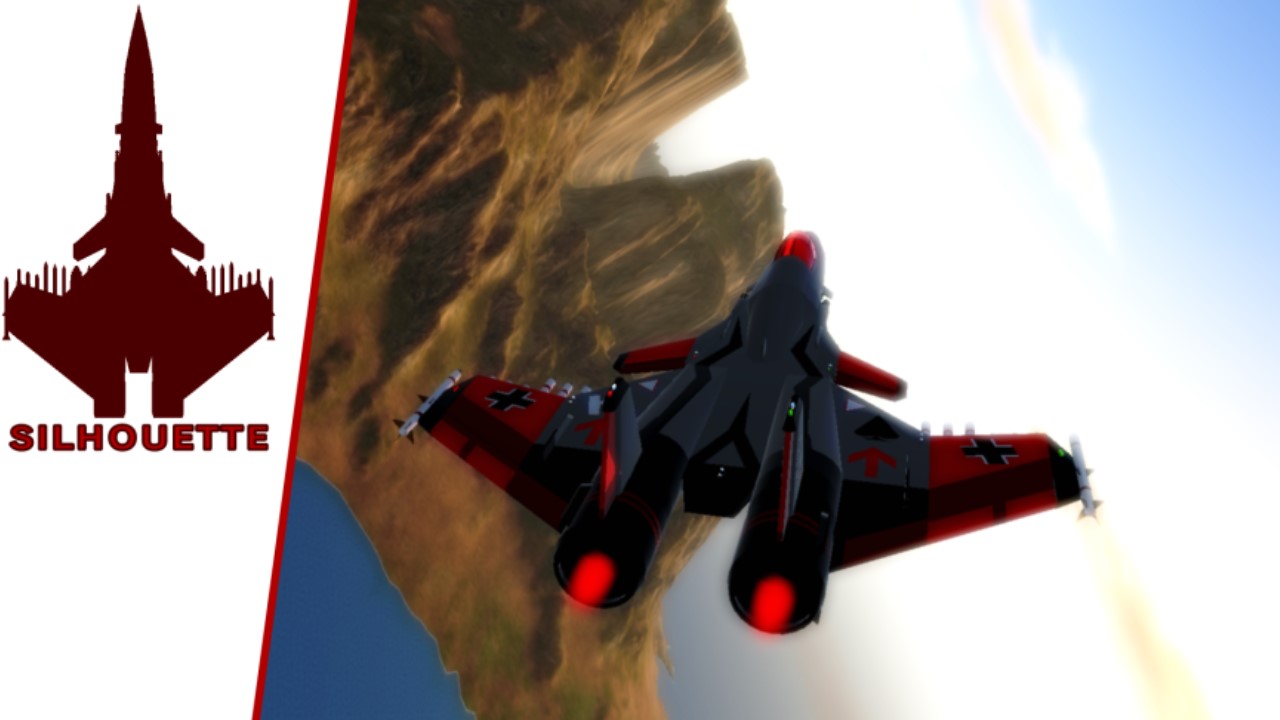[ DECLASSIFIED SEPTEMBER 29, 2024 ]
[ C L A S S I F I E D D H C D O C U M E N T ]
"Fight on and fly on to the last drop of blood and the last drop of fuel, to the last beat of the heart."
- Baron von Richthofen
DHC F/A-243 Richtofen II

Document I: Description
Document I.A: Synopsis
The F/A-243 is a large and heavy, single-seater multirole fighter aircraft developed by DHC for the German Luftwaffe. It is the corporation's eighth aircraft, and it is the product of its own Multirole Fighter Attack Program. The aircraft was a commemoration to the 102nd death anniversary of the famous First World War ace Baron von Richthofen, and it features an inverted sweep design that increased its agility when using thrust vectors. It also has a predecessor of the same name of Second World War fame, which was also known for its deadly speed and maneuverability. The aircraft was also marketed to Japan as the DHC F/A-243 Hakuryuu (White Dragon), the name taken from the designation of an abandoned DHC F/A-173 project intended to be primarily sold to Japan.
Document I.B: Design
Engines
The Wilhelm VII.ADG engines from the Darkhound II proved once again its strength, and were used again in the Richtofen II. However, the empty weight of the aircraft was 12,000lbs heavier than its predecessor, and heavily hindered the aircraft's top speed.
Airframe
The F/A-243 incorporated an inverted sweep wing design, which made the aircraft more maneuverable when using the thrust vectors in its engines. The downside was that without thrust vectors, the Richtofen II took longer to turn. The design was also quite unstable, and required the pitch trims to be constantly put all the way down to maintain stability when the aircraft was flying straight. The refueling probe present on its predecessor is also omitted, heavily limiting its potential use as a long range strategic fighter.
Radar Systems
The DHC still used the Umgeben.V44 Radar Systems from the Darkhound II for the F/A-243. To ease up maintenance for the radar suite, a variant with an openable panel right in front of the cockpit for access to the system was made.
Document I.C: Armament
The E6 weapon was used again for the Richtofen II, but due to limited space on the aircraft's underside it carries three less Blackhat AGMs than its predecessor. However, it still maintains the pairs of destructive MM-20D gatlings and A-28DK Friedrich unguided bombs from the F/A-168M.
Document I.D: Production
Its higher maneuverability compared to the previous F/A-168M Darkhound II made it as formidable as its predecessor despite its lower top speed measurements. The nickname it earned for the German Luftwaffe was "Pixy," and for the Japanese Air Self-Defense Force it was nicknamed "Zero," just like the Mitsubishi A6M Zero of the Second World War. The aircraft sadly sold in drastically fewer numbers, with only a total of 92 units built, only 28 in current active service in the Luftwaffe and 4 in the JASF.

Document II: Aircraft Specifications
Note: All top speed measurements are taken in TAS.
Crew: 1
Powerplant: 2x DHC Wilhelm VII.ADG afterburning turbofan engines
Cruise Throttle: 40%
Cruise Altitude: 2,500ft
Service ceiling: 50,000ft
Maximum speed [Cruise altitude]: 2,300mph [Mach 3]
Maximum speed [Service ceiling]: 1,550mph [Mach 2]
Cruising speed: [Cruise altitude] 1,450mph [Mach 1.9]
Cruising speed; [Service ceiling] 400mph
Maximum range: 3,125 miles

Document III: Weapon Loadout
The aircraft's weapon payload is specified below:
- 2x DHC MM-20D 20mm Gatling Gun
- 2x DHC A-28DK Friedrich 500lb Unguided Bombs
- 13x DHC G-AMS-73 William AAMs
- 10x DHC G-GMS-43 Blackhat AGMs

Document IV: Control Manual
The controls for the aircraft are specified below:
- AG1 : Toggle Navigational Lights
- AG2 : N/A
- AG3 : N/A
- AG4 : Toggle Thrust Vectors
- AG5 : Toggle Carrier Landing Hook
- AG6 : Toggle Countermeasure SET A
- AG7 : Toggle Countermeasure SET B
- AG8 : Toggle Countermeasure SET C
- VTOL Down : Flaps
- Brakes : Air Brakes
- AG4 + Pitch and/or Yaw : Thrust Vectors
Note 1: Use yaw vectors ONLY if the aircraft enters the possibility of a flat spin.
Note 2: ALWAYS put Trim all the way down, the airframe is slightly unstable due to its wing configuration.
The cameras are listed below:
- Cam 1 : Nose Camera
- Cam 2 : Dynamic Combat Camera [Orbit]
- Cam 2 : Dynamic Combat Camera [Chase] (ace combat vibes)
[ C L A S S I F I E D D H C D O C U M E N T ]
Constructive criticism and parts or builds suggestions are openly accepted!
[ DECLASSIFIED SEPTEMBER 29, 2024 ]
Specifications
Spotlights
- ArcturusAerospace 5.4 years ago
- Mast3rmem 5.4 years ago
- Bernkastel 5.4 years ago
- MarbleXLazuli 5.4 years ago
General Characteristics
- Created On Windows
- Wingspan 48.9ft (14.9m)
- Length 75.5ft (23.0m)
- Height 18.8ft (5.7m)
- Empty Weight 54,282lbs (24,622kg)
- Loaded Weight 73,420lbs (33,303kg)
Performance
- Power/Weight Ratio 0.918
- Wing Loading 71.9lbs/ft2 (351.0kg/m2)
- Wing Area 1,021.2ft2 (94.9m2)
- Drag Points 21119
Parts
- Number of Parts 341
- Control Surfaces 16
- Performance Cost 1,609







It looks real fragile, especially the neck
@Bernkastel << T h i s t w i s t e d g a m e n e e d s t o b e r e s e t . >>
<< It's Time >